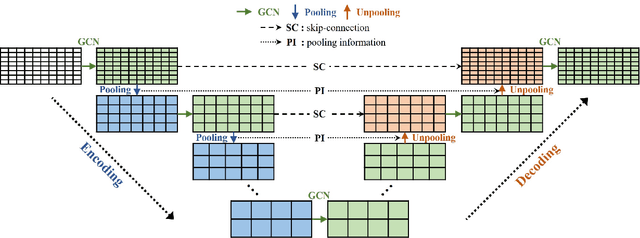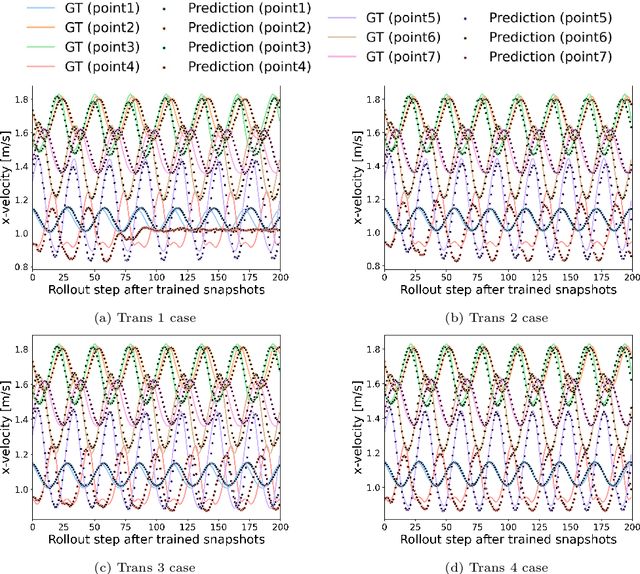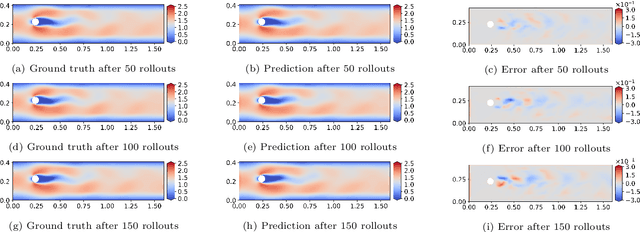Enhancing Graph U-Nets for Mesh-Agnostic Spatio-Temporal Flow Prediction
Paper and Code
Jun 06, 2024



This study aims to overcome the conventional deep-learning approaches based on convolutional neural networks, whose applicability to complex geometries and unstructured meshes is limited due to their inherent mesh dependency. We propose novel approaches to improve mesh-agnostic spatio-temporal prediction of transient flow fields using graph U-Nets, enabling accurate prediction on diverse mesh configurations. Key enhancements to the graph U-Net architecture, including the Gaussian mixture model convolutional operator and noise injection approaches, provide increased flexibility in modeling node dynamics: the former reduces prediction error by 95\% compared to conventional convolutional operators, while the latter improves long-term prediction robustness, resulting in an error reduction of 86\%. We also investigate transductive and inductive-learning perspectives of graph U-Nets with proposed improvements. In the transductive setting, they effectively predict quantities for unseen nodes within the trained graph. In the inductive setting, they successfully perform in mesh scenarios with different vortex-shedding periods, showing 98\% improvement in predicting the future flow fields compared to a model trained without the inductive settings. It is found that graph U-Nets without pooling operations, i.e. without reducing and restoring the node dimensionality of the graph data, perform better in inductive settings due to their ability to learn from the detailed structure of each graph. Meanwhile, we also discover that the choice of normalization technique significantly impacts graph U-Net performance.
 Add to Chrome
Add to Chrome Add to Firefox
Add to Firefox Add to Edge
Add to Edge